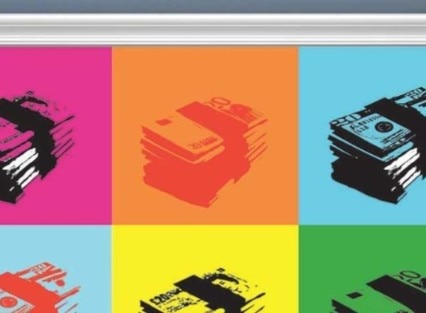In this reversal, an interesting pattern has emerged. Most of the corrections or reversals in markets have thus far been limited to the ranges seen in 2013. This is far short of historically normal volatility or the usual volatility that we experienced in the early years of the present bull run. Consequently, markets are now pricing future volatility at the unusually low level that has persisted since last year.
Looking forward, we continue to be bullish. We’ve long been bullish. Nonetheless, we believe now is the time to acknowledge and position portfolios for a future return period that is less robust than today. When a large reversal in fortune for the financial markets comes, history suggests the opportunity to take evasive action will shrink away quickly. In general, a dollar of investment risk is cheaper to hedge in today’s markets than it was in 2008-09’s depressed markets. Buyers of insurance should hope they never need it. But we believe wise buyers take advantage of insurance when the cost of insurance is cheap.

Developed market equities enjoyed extraordinary returns in 2013 and equity market valuations have risen for the past two years. In general, we think investors doubted the sustainability of the unusually sharp increase in corporate profits early in the recovery. Not only have those profits endured, but they continue to grow further. While earnings-per-share (EPS) were up just 6% in 2013, it is likely that EPS in the aggregate will have grown about 30% from prior peak-2007 levels. Meanwhile, large cap U.S. share prices have risen just half as much. Thus, looked at from the pre-crisis to the current period, U.S. equity valuations have fallen during the age of central bank quantitative easing.
With the backdrop of low valuations through the bull rally, we expect further equity market gains to come, and still see current valuation anomalies as more serious in fixed income markets. However, as Figures 5 & 6 show, markets are far from depressed and if we have two more years of rapid price escalation, U.S. equities will again have a serious valuation problem and pay a meaningful price in the next, inevitable.

Buy insurance when it’s cheap
With this “maturing bull market” in mind, investors should focus on issues of liquidity and hedging opportunities at a time when such a focus is largely ignored. Over the past year, “long strategies” have trounced “long and short strategies,” as markets have climbed sharply. But we believe it’s gradually getting harder to find great value in long-only strategies.
While optimism may have gotten carried away in small areas of the market place, investors have been more discriminating overall in awarding performance. As such, correlations across asset classes and within markets have generally declined in the maturing bull market. However, such correlations will likely jump, as is usual, in some future period of significant market stress. Hedges may be one of the few bargains left behind in the bull market rally.
Investors who still worry over “extreme downside risk” are willing to accept low returns in fixed income markets or cash, but largely don’t recognize the low cost for hedges – alongside a prudent increase in risk exposure – as worthwhile.
While not immediately troubling given a backdrop of the strong profit recovery, market valuations have been rising relative to the costs of hedging in both equities and credit markets. We can gauge the cost of hedging by looking at option volatilities as volatility levels are a major component driving asset prices. While we noted that the price/earnings (PE) multiple for the S&P 500 has fallen some since 2007, the price of expected future market volatility has dropped more. Similarly, while credit spreads have tightened sharply since 2008 – limiting future returns for investors – the insurance cost for hedging credit risk has plummeted (see Figure 8).

Time to consider increasing exposure to illiquid assets
We recommend an overweight to equities at current valuation levels with a 12-18 month tactical investment horizon and an underweight to sovereign fixed income. We are increasingly optimistic on Europe’s prospects for both equity and credit markets in 2014 and are also bullish on Northern Asia within the otherwise less compelling emerging markets, given its external surpluses and likely exposure to improving world trade. Looking forward, however, the very high cash allocations and a runaway bull market in equities suggests investors should presently consider raising exposures to less liquid investments, including high quality private equity, hedge fund and real estate structures.
Such a move does not come without a cost. In some future period of market dislocation, illiquid assets would indeed be illiquid. But the total return one can earn from quality alternative investments could potentially exceed the returns on public equities when public markets are fully valued. Compared to the trough valuations of the crisis period, we believe 10-year forward looking returns in public equities and credit markets have roughly halved. By comparison, we believe the forward looking 10-year returns in private equity and real estate investments have diminished roughly 20%.
While the timing of any exit is never clear, based on our 10-year return estimates, private equity and real estate vehicles could produce annualized returns of 11.9%, almost double the 6.7% return estimated for developed market large-cap equities. One lesson of the 2008-09 period is that the liquidity of “liquid assets” is not guaranteed and can create a shock when it disappears. Therefore, it is important for investors to be fully compensated for the illiquidity they eventually assume.
In general, we question whether investors have raised their risk tolerance too much while reducing their liquidity preference too little. As illustrated in Figure 9, the estimated “required return” in bond and stock markets has fallen significantly since 2009 while the return expectations for illiquid private market investment products have been far more stable.
The ability to hold assets that fall in price through a market dislocation, or have no price in a market dislocation, requires a sterling balance sheet. But we surmise that such a balance sheet, coupled with the willingness to assume liquidity risk when others don’t, will do a lot to determine which investors distance themselves from the falling return prospects of a maturing bull market.
In summary, we remain bullish on growth prospects, and expect equities to outperform fixed income for a meaningful period ahead following years of profound monetary easing. But investors should participate with their eyes open. Markets such as the U.S. are no longer depressed. Hedges in particular and select alternative investments have been “left in the dust” in the roaring bull market recovery. We suggest investors take advantage of such opportunities.



